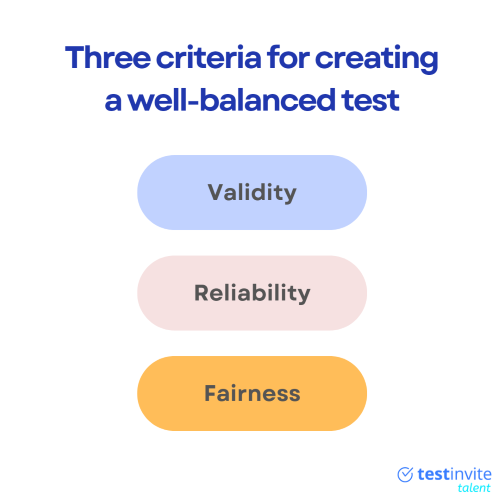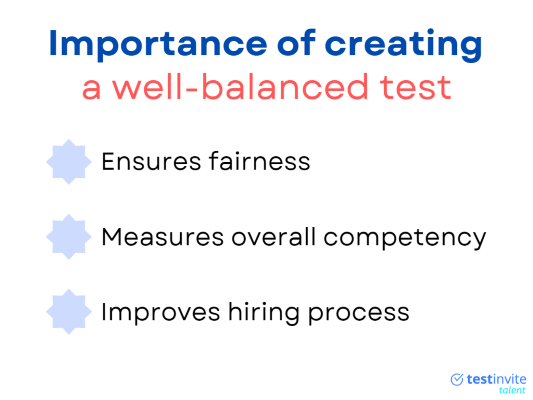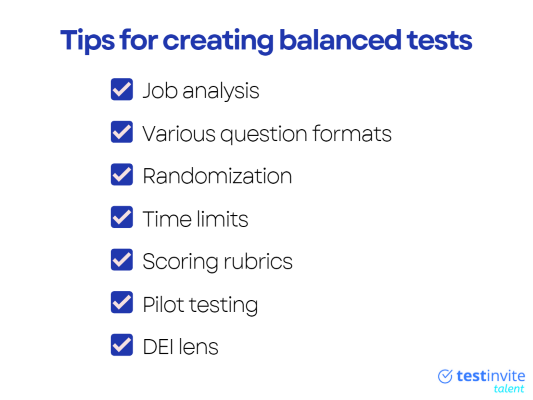All Resources
To ensure accurate, reliable, and unbiased results, it's crucial to create a well-balanced test that measures desired skills equally, produces consistent results, and gives an equal chance to all candidates. To achieve balance in testing, it's important to measure each aspect equally, limit the time for each section, and use randomized questions. In this article, we'll explore why balanced tests are important and provide tips for designing effective assessments that help hiring managers identify the most qualified candidates.

To create balanced and fair tests, it's important to understand validity, reliability, and fairness.
Balanced tests ensure that each dimension being measured is given equal weight, leading to accurate results that reflect the candidate's skills and knowledge. Creating balanced tests is important for several reasons:

A balanced test ensures that each candidate is tested on the same range of topics and skills, and in the same degree of difficulty. This helps ensure fairness and reduces the chances of any particular candidate being disadvantaged due to an uneven distribution of questions.
A balanced test can provide a more accurate measure of overall competency by testing candidates on a range of topics and skills, rather than just focusing on one particular area.
Creating a balanced test requires careful consideration of the content and skills that are most important for candidates to have. This can help improving hiring process by ensuring that hiring managers are focusing on the most essential competencies and skills.
To ensure that a test is balanced and accurately measures the intended skills and abilities, several best practices can be followed:

This can be achieved through a job analysis or consultation with subject matter experts. The test should be designed to measure these specific skills and abilities.
A balanced test should use a mix of question formats, such as multiple-choice, short answer, and essay questions. This can help ensure that candidates are tested on a range of skills and abilities.
To prevent candidates from memorizing the answers, questions should be randomized. This can also help ensure that all candidates are tested on the same set of skills and abilities.
Setting time limits can help ensure that candidates have an equal opportunity to demonstrate their skills and abilities. This can also help prevent test-takers from spending too much time on one section and neglecting others.
A scoring rubric or answer key can help ensure that the assessment is scored consistently and fairly. This can help reduce the potential for bias in the scoring process.
Pilot testing the assessment with a small group of employees or volunteers can help identify any flaws in the assessment and ensure that it is measuring the intended skills and abilities.
Review the assessment for any potential bias, such as cultural or gender bias. Consider using a diversity, equity, and inclusion (DEI) lens when designing and reviewing the assessment. This can help ensure that the assessment is fair and accessible to all candidates.